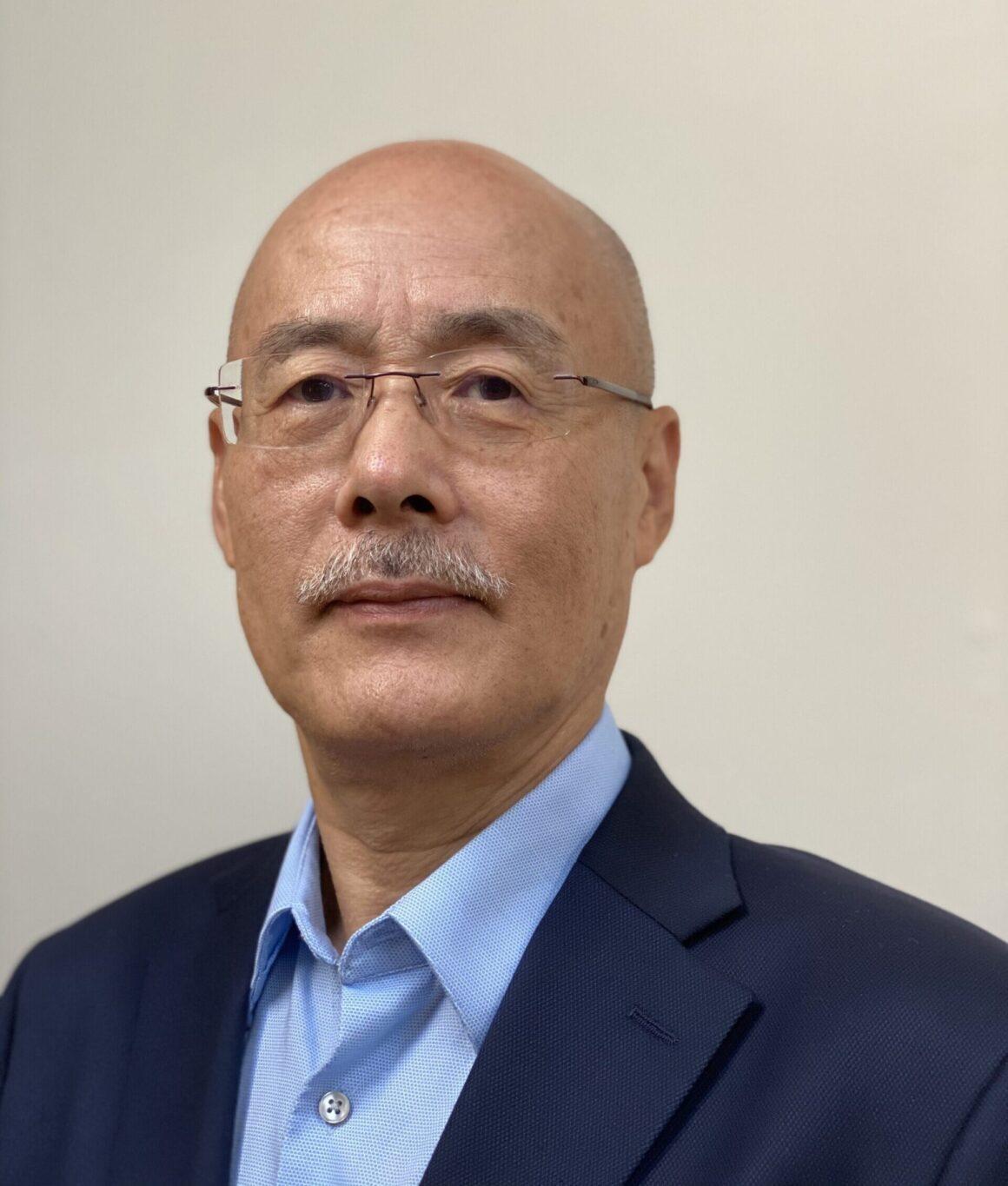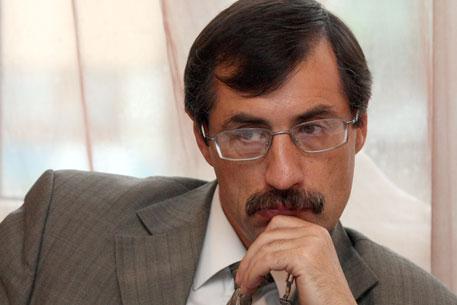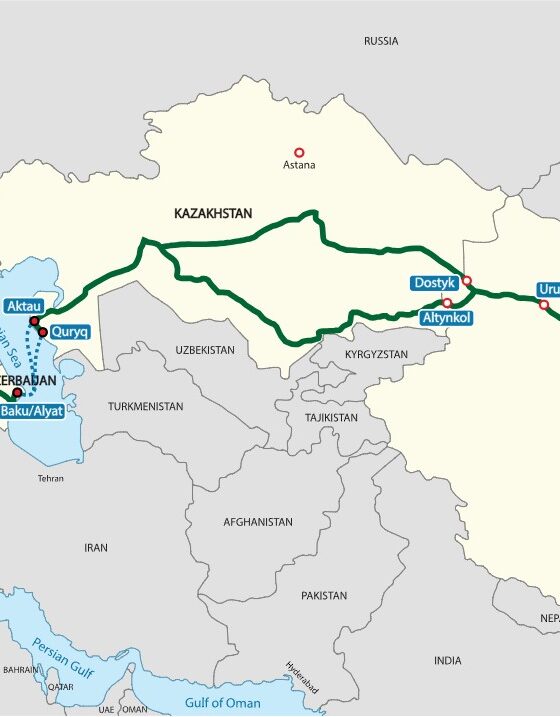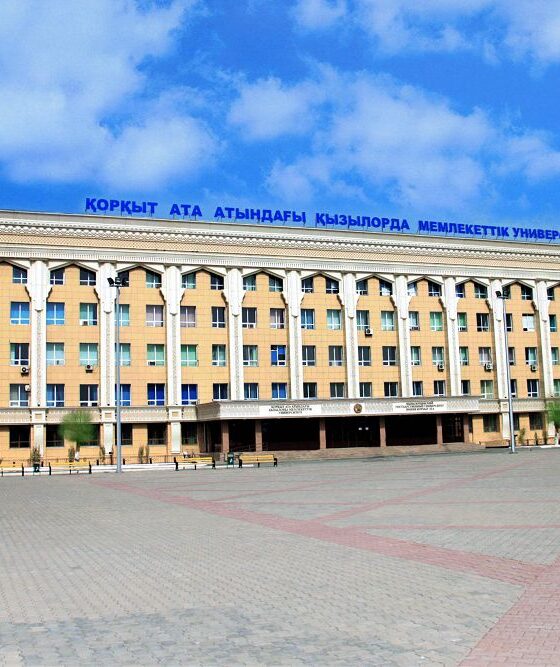
By Lan Wu
Wu is an expert on economic and social development and regional cooperation in Central Asia and Eurasia, with over 25 years of professional experience (eight years in the field). Wu is also a former staff member of the Asian Development Bank, having previously held the positions of Country Director of the Kyrgyz Republic, Head of Almaty Office; Head, Central Asia Regional Economic Cooperation (CAREC) Unit; and program and project manager. Dr. Wu has been a consultant on development issues in Central Asia and Eurasia since 2013 and received a PhD in Economics from Penn State University.
This paper focuses on improving urban water supply as an integral part of Kyrgyzstan’s national development goal of providing safe drinking water to all. While a national program exists for improving rural water supply, urban water supply as a municipal responsibility is facing increasing challenges which are further exacerbated by the COVID-19 pandemic. This paper proposes improving municipal vodokanals (water companies) as a priority in moving towards the country’s water supply goals. The concrete measures and phased approach proposed in this work would bring quick and significant improvements to the vodokanal’s operation and services as well as its finances, thus laying a solid foundation for further improvements in urban water supply towards long-term sustainability. The implementation of the proposed measures would require no significant outlays from central or local government budgets, which are stretched to the extreme due to the havoc caused by the COVID-19 pandemic. To the extent that urban water supply systems in Central Asia share common a heritage from the former Soviet time, the analysis and recommendations of this paper may also apply to other Central Asian countries.
Urban Water Supply: Importance and Poor Performance
Over 36% of the population of Kyrgyzstan lives in cities and towns, and more than half of its GDP is produced in urban areas, where economic productivity is also higher. Despite its essential role and importance, the urban water supply sector has a record of inadequate and poor services. Access to water supply systems in secondary cities and regional centers is much lower than in Bishkek, with water available to as few as 60% of the residents. For those not connected to the systems, fetching water is a burden which often falls on women and children. Even for those connected to water systems, service interruptions occur often, where broken parts and malfunctioning equipment are among the main causes. Service interruptions can last 12 hours a day or longer in smaller urban centers. Furthermore, the quality of water supplied is often subpar since water treatment is inadequate and water testing is infrequent. This is a key reason for the persistence of water-borne diseases which often befall children. Water loss or non- revenue water (NRW), including both water leakages and non-payment for water use, is high and prevalent, in the range of 40-75%.1
As a national development goal, the Government of Kyrgyzstan is committed to the sustainable provision of safe drinking water to all, as reaffirmed in the recently unveiled strategic program (henceforth, the Program) aimed at reaching this goal. The Program has also renewed the country’s commitment to achieving Goal #6 of the United Nation’s Sustainable Development Goals {SDGs}.
Progress has been made over the past two decades in improving rural water supply, for which the national program “Ala-Too Bulagy”2 stands out for its firm support from the central government leadership, wide user ownership and participation, and success in rallying donor support. Unfortunately, no such national program exists for urban water supply improvement. In urban areas, the continuing deterioration of water supply services poses increasing threats to people’s health, welfare, and livelihoods.
Traditionally, local government has been the main source of financing for the urban water supply sector, with negligible contributions from the central government budget.3 While such support from the central government budget is expected to continue to be small, local governments’ fiscal situations are being significantly worsened by the COVID-19 pandemic. Cities and towns (where economic activities are concentrated) are hit particularly hard, with a severe negative impact on local governments’ revenue; at the same time, measures to fight COVID-19 and to restart the economy are putting extra demands on local government spending. Unemployment could double by the end of 2020, and remittances, which constitute a major pillar of support to local economies in normal times, have already dropped by 25% for the first half of 2020. Uncertainty and risk continue to shroud economic recovery prospects, as Kyrgyzstan, a small and open economy, depends heavily on larger economies in the region (Russia, Kazakhstan, and China), in addition to the continuing havoc being caused by the COVID-19 pandemic.4 Another exacerbating factor is the strain on local governments’ management and administrative capacity, which is being further exacerbated by the pandemic.
Given the above, a danger is looming large: that the important work of improving urban water supply systems will be delayed, and that the ultimate goal of sustainably providing everyone in the country with safe drinking water as a national development goal will not be achieved.
It is therefore critical to find a feasible and effective approach to move forward in improving urban water supply while fully accounting for the extra constraints being imposed by the COVID-19 pandemic, a puzzle to which the rest of this paper is devoted. In particular, the paper will (i) prioritize improving vodokanals as the “low-hanging fruit”; and {ii} recommend a set of concrete measures, which, when implemented in a phased manner, would lay the foundation for the sector’s long-term development and sustainability. Note that the recommendations below neither require nor assume any significant financial inputs from either the central or the local government budget, although political support and leadership at various levels of government is essential.
Challenges to Long-Term Sustainability of Urban Water Supply
As a municipal entity, the vodokanal is charged with the responsibility of supplying water in cities and towns.5 The company’s efficient and effective operation and long-term financial sustainability, therefore, hold the key to the country’s long-term success in meeting the water needs of urban households and commercial users. However, vodokanals face tremendous challenges that are casting increasing doubt on their ability to fulfill their duties. Key challenges include the following. (Note that this narrative on key challenges is consistent with the Program.)
- Dilapidated infrastructure and equipment: Water supply systems in most cities and towns were built more than 30 years ago, with some being over half a century old; most investment was made at least 25 years ago. Most infrastructure and equipment has either reached or come near to the end of its technical and economic life, and major repairs and replacements are long overdue (though donor support has helped a small number of cities; see footnote 3).
- Financial non-sustainability, as no vodokanal generates any revenue for investment. Most vodokanals are in serious debt, even though some of them are owed large sums of money in unpaid water bills. Key reasons include the following.
- Water price being too low: Tariff formation does not account for “full cost”; in particular, little or no consideration is given to major repairs or the replacement costs involved in investment in water supply systems.
- Water users underpaying: While vodokanals supply water to users according to their needs, they charge users only according to the “norm” (a fixed amount per person per day). Overuse of water above the norm is universal in the absence of water meters, as is underpaying (i.e., there are fewer paying residents than actual users); further, large (state) enterprises have accrued large unpaid water bills.
- Inefficient operation, as reflected in:
- Non-revenue water (NRW), which reaches 36% and is higher in some locales.6 Without metering, there is no way of knowing what proportion of NRW is from non-payment (or underpayment) and what proportion is from leakage due to dilapidated systems.
- Lack of quality water supply: Although actual testing of water varies across cities, infrequent and ineffective testing of water quality is common. The potential for contamination of surface water as a water source is great; even ground water faces problems, as boreholes are not adequately protected.
- Ineffective company management, including:
- Poor vodokanal performance results reflect a lack of effective management or leadership, even if company directors are technically capable. Lack of incentives is a key reason, given the institutional environment of the company-this is a point that will be further addressed below.
- There is a genuine lack of qualified technical staff; existing staff lack necessary technical and professional skills; staff turnover is high, especially for qualified staff. Low pay and a lack of career prospects are key reasons.
- Organizational adjustments are needed to delineate department responsibilities and facilitate coordination across departments within a vodokanal.
These challenges need to be addressed-some of them urgently. The importance of systematically improving vodokanals cannot be overemphasized. Without these companies being on sustainable footing, any project in urban water supply, be it government-funded or supported by donors, would at best bring short-term improvement, and the sector’s long-term sustainability would remain elusive.
Ways Forward: Institutional Improvement and Vodokanal Capacity Development
While vodokanals face a multiplicity of challenges, a phased approach is essential to moving forward: {i} this approach allows for targeting “easier” tasks first, which would bring quick success; such success in turn would generate confidence and build good-will, which is necessary for implementing further and “harder” measures; and further, (ii) some of the challenges facing vodokanals are rooted in the larger municipal environment surrounding vodokanals, and addressing them would take more effort and likely a longer timeframe. Thus, a two-phase improvement of vodokanals is proposed below, with specific targets, suggested measures, and expected results discussed for each phase.
First Phase: Targets, measures, and expected results
Target A: Reducing NRW to improve vodokanals’ finances towards sustainability
NRW is the single most important drain on vodokanals’ finances. The companies supply much more water than they collect money on, and thus they incur higher costs for processing and servicing without receiving corresponding revenues.
Measures to take: Install water meters for both households and commercial users. Meters will be instrumental in determining how much NRW arises due to technical leakage, thus allowing for a subsequent determination of how much it would cost to fix the system (Vodokanals can leverage outside resources such as bank loans to fix identified leakages as well as for purchasing and installing water meters themselves, since a financing plan based on reducing NRW would be highly “bankable.”).7 Metering can also get around the existing “norm system” which needs overhauling. This would save vodokanals from getting into technical and political battles with the aim of overhauling the norm system, which would involve multiple parties at the local and national levels. Water metering is also the basis for eliminating tariff collection problems.
Expected results: Vodokanals’ finances can improve quickly and significantly. This can be achieved without major policy changes, company reshuffling and staff changes, or tariff increases, and no financial support from the public sector is required. This last point is particularly significant during (and in the aftermath of) the COVID-19 pandemic. With improved finances, vodokanals could hire and keep qualified staff, train existing staff, and conduct necessary repairs and maintenance. The resulting improvement in services will buy good-will from water users, which is essential for longer- term reforms and improvements.
Target B: Levying a specific tax on water use by tourists to improve vodokanals’ finances towards sustainability
Measures to take: Design and levy a specific tax on tourists (for example, a fixed monetary amount on each tourist per day) in Lake Issyk-Kul, which is a popular tourist destination. This would need support from the municipal government and city councils, as well as possibly the central government. But the rationale for such a tax is strong. Using a tailored tax on tourists makes good economic sense and contributes to the preservation of valuable water resources. A simple and transparent tax collection and administration arrangement should accompany the imposition of this tax to ensure proper collection and use of such a tax.8
Expected results: The tax should improve finances of vodokanals in the Lake area. If appropriately designed, the tax should not put a damper on tourism. On the contrary, improved company finances would lead to better services. This in turn should help to attract even more tourists while contributing to environmental protection. Note that part of the tax revenue thus collected could be used to good effect elsewhere, depending on agreements between the central government, local governments, and vodokanals.
Target C: Improving company management
Measures to take and expected results:
- Company reorganization: Conduct organizational audits, clearly define the functions and responsibilities of each department as well as staff positions needed to fulfill the responsibilities of each department; define each staff member’s role and responsibilities; restructure the company if necessary.
- Staff capacity building: (a) Train staff in specific skills such as accounting, including specific technical skills in key departments, as well as managerial skills for managers at company and department levels; (b) Recruit qualified professionals; (c) Increase staff compensation based on performance.
- Defining the vodokanal director’s job: Specify the job’s terms of reference, making sure that full cost recovery, financial sustainability, and customer satisfaction are in the job deliverables; establishing a system whereby the director is held accountable (for more on this, please see “Target: Making the company truly independent” below}.
- Strengthening customer service and outreach: This will have both short-term and long- term positive impacts. In particular, improved communication and better relations with customers would help build good-will and a better understanding of customers’ needs, both of which are key to the long-term sustainability of the company and the sector, since customers play a crucial role both as companies’ service recipients and as the voter base of local government.
Second Phase: Municipal environment improvement; caution for private sector
While implementing the measures proposed above would bring quick, visible, and significant improvements to vodokanals’ finances, operations, and management, they are not sufficient. More needs to be done to achieve long-lasting improvements.
For a vodokanal’s director, who is appointed {or dismissed} by the mayor, the company is in an impossible position: although the company is an independent legal entity on paper, its assets belong to the municipal government and it has no control over the tariffs it charges, nor is the company held responsible for investing in the water system infrastructure. Although the municipality is, in principle, responsible for investing in water infrastructure, the company rarely receives municipal financial support (due to lack of funds) except for the purpose of maintaining daily operations. The director also has no way of getting water supply issues on the local political agenda to win political support. Meanwhile, for the mayor, the key is to ensure (re)election and avoid a voter “revolt” arising from water issues. Thus, non-interrupted water supply is the mayor’s key (if not only) focus in water-related issues. Accordingly, the terms of reference of the director’s contract given by the mayor do not mention financial sustainability or (full) cost recovery among the director’s key responsibilities. Hence, the director exclusively focuses on ensuring water flow 24/7-and on little else.
In such an environment, it is not surprising that within the company, managing for efficiency is not a top priority. Clear delineation of responsibilities among staff members and among functional departments takes a back seat, and there is little incentive for staff to improve their skills or performance. Even customer relations is not the number-one priority, since there is always someone else to blame: the city, for not providing enough funds for repairs and investment. With low pay and little upward career mobility, no wonder it is hard to attract, recruit, and retain qualified people.
Target: Making the company truly independent
Measures to take and expected results:
- Giving the company full legal independence: Legally separate vodokanals from the municipalities they have belonged to until now, including transferring ownerships of existing assets from the municipalities to the vodokanals, abolishing mayoral appointment of the company director, and establishing the commercial structure for company leadership (board, selection of director, etc.).
- Giving the company financial independence: This can be achieved only gradually. The key is tariff determination. In Kyrgyzstan today, it would be very hard to implement “full cost recovery tariffs” quickly-both because tariffs have been kept so low for so long, and because tariffs could become politically explosive very quickly as experienced by the country in its recent past. However, efforts have continued in the legislative process towards making local governments responsible for the long-term sustainability of their urban water supply. In addition, water users’ mentality is changing: that is, paying for quality water services is more willingly accepted by household water users, as mentioned in the Program (section 2.5). This bodes well for future tariff increases supported by improved water services.9
- Increasing tariffs to account for full cost recovery: Full cost recovery tariffs, which should cover expenses of daily operations and maintenance plus appropriate amortization of fixed assets based on their future replacement costs, are essential to ensuring sector sustainability. Once the institutional environment and other conditions are in place, and company services improve, adjusting tariffs would be easier and encounter less resistance both from water users and from the local municipal environment.10
- Strengthening municipal regulatory capacity: Once vodokanals become truly independent, the appropriate regulatory capacity of local governments, including the office of the anti- monopoly committee, must be strengthened for proper regulation. In defense of water users’ interests, this would prevent possible abuses of power by vodokanals as a natural monopoly.
- Establishing mechanisms for community consultation and communication: Although such mechanisms exist in one way or another, the key is to strengthen them and make them into an effective forum for interested parties-city, company, water users-to interact with a focus on service quality. This must be done regularly, and local political representatives must attend and participate to make it effective and a site of accountability. Such mechanisms would function to (a) keep the company improving services on an ongoing basis; and (b) win and strengthen (political) support for the company.
- Implementing a well-targeted subsidy scheme: As tariffs increase gradually, there is an increasing need for the design and implementation of a subsidy scheme which would help those people who are truly economically disadvantaged, thus alleviating equity issues in water supply and services.
Private sector role to be carefully considered
Private sector participation in the urban water sector is common elsewhere in the world, in different forms and with varying degrees of success. It is as yet unclear what would be the most appropriate role of the private sector in today’s urban water sector in Kyrgyzstan. A key to the long- term sustainability of vodokanals, and the sector as a whole, is to make vodokanals truly independent, including the authority to decide on tariff rates (under appropriate public regulation). If this cannot be achieved, it is unclear how a private company could do better. Even under a management contract, a private company cannot suffer losses over a prolonged period of time. Thus, local governments must give some kind of assurance for normal profitability anchored in service performance. But if long-term profitability is assured, then vodokanals already in place can do the job (with necessary improvements as proposed in this paper). Thus, caution needs to be exercised in contemplating how to introduce private sector participation in the urban water sector. In particular, simply replacing the existing vodokanals with private companies would not create miracles.
1 The narrative and data in this paragraph are based on the Program.
2 This national program launched in 2017 was preceded by the “Taza Suu” program, which started in 2002 and, supported by donors, has also achieved measurable success.
3 Donor support for urban water supply includes projects around Bishkek and Osh (World Bank), waste water treatment in three cities at Lake Issyk-kul (Asian Development Bank, ADB), and a credit line for urban development (European Bank for Reconstruction and Development, EBRD).
4 The narrative in this paragraph is based on a recent assessment by the Asian Development Bank and the United Nations Development Program.
5 While waste water treatment is also important, it is not explicitly discussed in this paper in order to save space. As waste water treatment is also the responsibility of vodokanals, systematic improvement of vodokanals will lead to improvements in waste water treatment.
6 An NRW figure of 36% was calculated from the data given in the Program; actual data from several cities show that well over 50% of all water supplied by the vodokanals is NRW.
7 Vodokanals can leverage outside resources such as bank loans to fix identified leakages as well as for purchasing and installing water meters themselves, since a financing plan based on reducing NRW would be highly “bankable.”
8 This specific tax approach is, in principle, applicable to other areas of water use besides tourism.
9 Several unpublished project studies by EBRD and an ADB consultant report point this out, focusing on consumers’ willingness to pay for water services in recent years.
10 According to the Program, households spent 0.4-0.5% of overall spending on water in Kyrgyzstan, as compared to the international norm of around 2.5% of household spending, indicating room for potential tariff adjustments.













